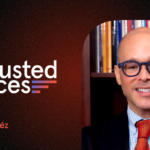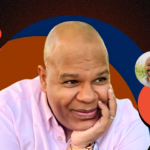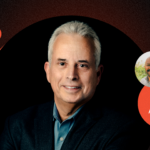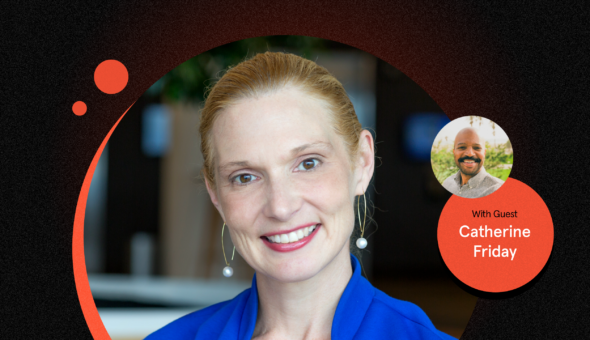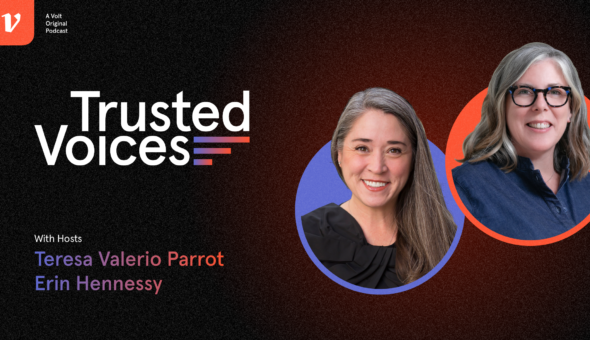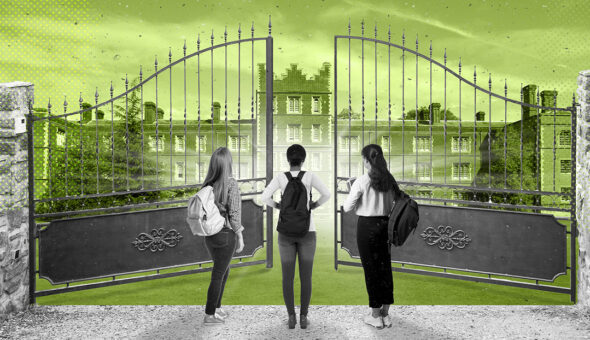Jonathan B. Williams, the associate vice president for undergraduate admissions, access and pipeline programs at NYU, discusses the importance of the educational pipeline from kindergarten through college and how admissions teams should make a concerted effort to meet prospective students—all prospective students—where they are to foster diverse student recruitment.
Show Notes
- How Universities and Colleges Work with Public Charter Schools
- NYU Sends Out Offers of Admissions to Class of 2027
Recorded Thursday, May 4, 2023
Read the full transcript
Kevin Tyler:
Higher Voltage is brought to you by eCity Interactive. For over 20 years, eCity Interactive has created websites and digital marketing strategies and solutions for colleges and universities that deliver results and exceed expectations. Their latest offerings to higher ed clients include enrollment, funnel diagnostics, and enrollment support services that efficiently attract and engage potential applicants with results you have to see for yourself. To learn more, visit ecityinteractive.com.
Hello and welcome to Higher Voltage, a podcast about higher education that explores what’s working, what’s not, and what needs to change in higher ed marketing and administration. I’m your host, Kevin Tyler.
Welcome back to Higher Voltage, I’m your host, Kevin Tyler. Today we have Jonathan Williams, AVP for Undergraduate Admissions, Access and Pipeline Programs at NYU joining us today on the show. We’re going to talk about ways institutions can partner more with communities in their quest to recruit more diverse and first-gen students to their campuses. Jonathan, I’m so excited to have you on Higher Voltage today.
Jonathan Williams:
Well, it’s so good to be here, thanks for inviting me, I appreciate it.
Kevin Tyler:
My pleasure. Before we dive into our conversation, I’m curious if you can just let us know about your role at NYU as AVP for Undergraduate Admissions, Access and Pipeline Programs, what that means and what your days look like?
Jonathan Williams:
Sure. In some places, it might be referred to as dean of admissions, but we don’t have that particular title at NYU. And really what it means is that I get the distinct pleasure to oversee the recruitment, the outreach, the evaluation, the selection process for each of our entering classes, specifically for undergraduate admissions, there are separate processes for our graduate programs. The Access and Pipeline piece is something that I think really this conversation will be mostly about. We, at NYU a few years back decided to establish within the Office of Undergraduate Admissions a team of folks who really are leading our efforts to reach out earlier to students, to families, to organizations, to talk about not just the college admissions process, but what college is all about to elevate that conversation within communities all across the country and really across the globe.
And to try and in insert a little bit of understanding around what this process is about, it tends to hold a lot of mystique for people, and those of us who are actually doing the work realize that it’s actually fairly straightforward, that’s the work that I get to do and get to lead. Distinctly at NYU, we have three degree granting campuses, obviously in New York, but we also have a campus in Abu Dhabi and in Shanghai where students can spend the majority of their four years earning a degree from NYU. So it’s a pretty exciting place to work.
Kevin Tyler:
Thank you for explaining that, that’s great, I love the title of it because it broadens the role of admissions into obviously more areas, but in some more critical ways of thinking about admissions, especially the Access and Pipeline piece. In the conversations we’ve had leading up to us chatting today, there is an idea that was put forth that’s Beyond the University idea, and I’m curious if you can talk a little bit about what this means to our listeners. As I understand, it’s just a way to understand the communities that are being recruited in ways that communicate a fluency in what they need, what the institution can offer, and how to best partner to provide all of those supports. Do I have that right or can you add some more detail to that so that our listeners understand what you’re trying to do?
Jonathan Williams:
Sure, absolutely. Education is such an important aspect of everyday society, and it’s unfortunate that we don’t spend as much time as I personally think we need to thinking about the connective tissue between K through 12 education and higher ed. And there frankly is a lot of finger pointing, finger wagging, middle schools are telling elementary schools, you’re not preparing our students properly, and high schools are telling middle schools, you’re not preparing, and so on and so forth. When really what we need to be thinking about is that educational pipeline, and if there are some cracks or leaks in that educational pipeline, how do we work together to make sure that we are patching up those leaks?
And I also draw an analogy to this with a three-legged stool and comparing the journey of a student’s educational process to a three-legged stool is really about thinking about the support, each leg represents a different area of support for that student. One leg is the student and their family and what their knowledge base might be about this, if you’re a first generation college goer, you may not have a family that really understands what this process is about in the same way as those families that have generations upon generations who have attended college. The other leg of the stool is the school and the community based organizations that may be a part of that student’s life, and so they’ve got a certain knowledge base and they’ve got a certain set of resources that they can invest in making sure that those students and families understand what this process is about.
That third leg is higher education itself, and when you think about resources and when you think about knowledge base, in some respects, that higher education leg, that third leg is the fattest of the three, but it’s also the one that’s least present in that journey K through 12. And so that’s the work that we are looking at, not just programmatically, but from a thought leader perspective, from a best in practice perspective at NYU. That’s the stuff that we’re trying to do with our access in pipeline division, is to bring people together who are engaged in this work and get us all served in the same room thinking about it together so that we can be more effective in helping particularly those families who might be first generation college goers, but really across the board.
Kevin Tyler:
It’s fascinating. I count myself fortunate to have had the experiences of working in K-12 public policy space, K-12 charter both in Ohio and then now in higher ed. And it seems as though as you move through the process of education, what you don’t get in the early stages is only compounded as you move through the infrastructure. So the obstacles multiply or amplify as you get older if you’re not getting the things that you need at the beginning. And I’m curious if there are some ways that you believe institutions of higher education can meet its students where they are in a more substantive and informed way to reach some of the goals that you’ve just talked about?
Jonathan Williams:
There are definitely ways to think about it. And I start with thinking about the resources that are available at higher ed, what exists there? You have significant research so that we could generate data points to understand what may or may not be lacking for a certain community. You have educators who are passionate about education and passionate about learning, and you do have some money available to do some things. And so when I think about what is it that higher ed can do to show up differently in communities, I think about those three things, and partnering with school superintendents to do longitudinal studies to better understand what communities might need. Showing up in high school classrooms and doing masterclass to give students a taste of what it’s actually like to be taught by a full faculty member at a higher ed institution.
Certainly, there are some programs that are out there that are more contractual thinking about colleges and universities that are actually establishing charter schools themselves or are charter authorizers, there are ways to use these resources. But the thing that I really want to point out, Kevin, is that, in our thinking about this, it’s not enough to simply, for example, invite students from high school to take classes at the college level, a lot of us do that. And it’s important, I think it’s a valuable tool, but where it misses the mark is that, there are so many more students who won’t have access or even knowledge about that as an opportunity, don’t have the means to pay for it. And so higher ed has an opportunity to show up in the communities, meeting people where they are to try and develop these relationships, and I think that’s the important step.
Kevin Tyler:
I totally agree with you, those are all great points, and these means to my next question around charters. We see a lot of examples of institutions setting up charters either on their campuses or near their campuses as a way not just to fill the pipeline, but also to meet students where they are. One of the probably best known examples is Purdue STEM Charter School, there’s in Dayton, Ohio, DECA, that’s an academy there that’s also a charter school. And even in Texas, Dallas, Paul Quinn University has a school on its campus, so these kids are seeing the campus college life firsthand by going to their second and third grade classrooms and I think that that is as important as well.
And regardless of how you feel about charters or not, these are efforts to start the conversation around college earlier in some of the same important ways that you are explaining for Beyond the University initiative. Are there other examples, either charter or non-charter institutions that are doing this work that you can share that you really admire?
Jonathan Williams:
Yeah, and I want to emphasize that I place no value judgment on the charter process, I do apply to all the efforts to try and improve educational opportunities for students. And if your listeners don’t know about Paul Quinn College, they need to get online to check it out, it’s amazing what they have done and what they’re doing, I really applaud all of their efforts. I think there’s a really strong example of how university community-based organization partnership can have a really positive effect. And this is not an endorsement, it’s just an example, but the College Advising Corp is a national organization that has about 30 cohorts that are tied to universities across the country, and the universities are recruitment grounds for the advising corp. And so the way the program works is that there is a partnership developed with the local public school system and sometimes there are charters that are involved, advisors are recruited typically from that university, but they can come from all across the country.
They’re primarily recent graduates of undergraduate college, and they are trained and placed in those schools as college advisors. They are helping to boost the information flow about accessing college, making sure that students are getting information about financial aid and how they apply for that. But the background of this is that, the colleges are providing certain resources that a community-based organization on its own would have to raise tons of money to be able to support, for example, human resources, just the process of doing background checks or posting an advertisement for a position, helping with the selection of the corp. Those things when connected to a college or university, can tap into an already existing HR system. There are other examples, again, that research thing that I talked about, other examples of using research to help better understand how to help those students that are a part of that school.
That partnership helps the CBO, the community-based organization focus more on the programming efforts that exists while the university can support it in the ways that it really needs. So I think those partnerships are the ones that we should be exploring, it both infuses the CBO with resources and helps them to do their jobs better, but it’s also showing up in the communities where people need them to be and meeting students and families where they are. And then lastly, I will say that even though it’s tied to a particular college or university, it is not a recruitment tool, it’s not about trying to get students to that particular university. And of course, some of them will naturally flow to that university, but it’s really about getting the right information in the hands of the folks that need it. And I just think it’s a wonderful model of how we can do those university community partnerships.
Kevin Tyler:
I really love that. And I think that in addition to getting the resources to the CBOs and being in the communities and providing supports for the needs that exist there, it also teaches the institution where their students are coming from in a way that will help them be more fluent in the issues that are at play today in many more communities than they seem to think right now. And so I think being able to speak in the way and market in a way that meets people where they are is a two-way traffic. Like, you can come into the community and provide the services, but you will also learn what it’s like to come from here and to your campus and you’ll be able to support me in a much better way because you’ve been to my neighborhood, you’ve been to my city, and you know the people who know me. And I think that’s a really important part of higher ed marketing, is knowing your audience beyond their ages, I think that there’s a lot more up to the conversation.
Jonathan Williams:
And it’s critical in a number of ways, it’s always been important for the work that we do in undergraduate admissions. We train our teams, and this is specifically true at NYU, and it’s playing now than the students who are showing up. It’s so important to understand the communities that you’re going to, the first step is to really understand yourself and what bias or baggage you might bring into a situation. So that’s the first step. And then the second step is, if I’m showing up in this community, how does what I know about myself impact my ability to be effective as a communicator, as an educator, as a recruiter, what do I know about these communities and how they might respond to somebody like me? And so that’s part of the training that we do, and understanding those communities helps that message get through much more cleanly, to your point.
The other part of it is that we’re on the precipice of a really concerning decision from the Supreme Court that very likely is going to remove the consideration of race and who knows what else in the evaluation process. And regardless of where you stand on that issue, it will change the way that college admissions can do its work, and it has the potential to change who gets access to our institutions, to higher ed in general. So we really do need to understand the communities in really significant ways and use that in understanding a student’s ability to be successful once they have applied understanding their ability to be successful on our campuses.
Kevin Tyler:
I’d love to hear about how NYU was doing some of this work, specifically what some of the efforts and partnerships that you’ve created to achieve some of the goals that you have set before you?
Jonathan Williams:
Access and Pipeline Division is one that’s about five years old now, and it’s done two things, it’s done an inventory of the university’s pre-college environment. We actually have about 160 programs that are being run throughout the year through our various colleges that are focused on giving middle and high school students an opportunity to explore the college environment. So we did that inventory and then we started to categorize it, well, this is more of an access program, this is more of a talent identification program, et cetera, so that we could help better communicate what’s available.
But the other thing that we’re doing is convening thought leaders, community-based organizations, bringing people together who have the same interests to talk about, how do we work together, what are some best and practices activities that we can do together? What’s the thinking need to be? How do we respond as a collective to the changes that we’re seeing either legislatively or in terms of funding? But to do those things in silos, it harms all of us. So those are some of the things that we are doing, and as I mentioned, as we do our recruitment, we are very conscious of what different communities do offer us that’s specific to NYU.
But we’re building this arc, and the beginning of the arc is just investing in the knowledge base for these communities and showing up with our resources to say, here’s what the benefit of higher education brings to you. With that information, students, you’ve got a better sense of why high school is important, why middle school is important, why algebra is important, why English is important, tying it to your future. But that’s also a way for us to better understand who’s applying to us and what their preparation might be like. So really, we’re investing in our future as well, which is why it’s about access as well as pipeline.
And then ultimately, being able to connect those students and the resources that they come from, particularly community-based organizations to organizations on our campus. So we have a partnership that we have a division within NYU called the Student Success Division, and we are literally partnering our student success folks who are invested in making sure that students can navigate higher education and be successful and graduate. We’re partnering that group with community-based organizations that we’re working with prior to the students applying so that there is a seamless connection, a seamless transition of support for those students as they get on campus, and we’re seeing those students thrive.
Also, because of that communication, frankly, we see a lot more students of color and first generation college students applying to undergraduate admissions. We’ve seen double-digit increases every year for the past several years, even through the pandemic in terms of those populations. And so it’s working, I’ll put it that way, it’s working for us and we’re really trying to be an example for how to make it work.
Kevin Tyler:
How did the effort begin? What did it look like to build, and what obstacles, if any, did you encounter?
Jonathan Williams:
That’s a really insightful question. So part of it is my background, I started off in college admissions back when the earth was cooling and had a few years of doing college admissions, I was on the secondary school side as a college counselor for a little while, even did a little bit of work in a financial aid office. But then unintentionally, but thankfully, took a little bit of a detour of work for the federal government for a while and worked with a bunch of nonprofits and then ended up leading some nonprofits that were focused on college access. And it started to dawn on me having been on one side of things, the K-12 and higher ed side of things, coming at it from a community-based approach, it really started to dawn on me how significant it was that CBOs could access resources. And unfortunately, particularly in the world of nonprofits, there’s always this sense of fighting over a piece of the pie when in fact the whole pie is available if you just rethink how to access those things.
That informed me whenever I came to NYU, and I think it was in part why they hired me, because I had that background. We had some leadership here who was also interested in thinking about our community connection a little bit differently. So that’s where it started with us, and slowly we hired some folks and we began to pull together some of the programs that exist at NYU. So there’s a program called the Community College Transfer Opportunity Program, CCTOP, which creates pathways for not just community college students, but those who are typically outside of the standard pathway to college. So sometimes folks who have stopped out for several years, folks who have stopped to raise a family and are now back in school. So that program existed and we were able to capture some other programs as well and pull them under this umbrella and diffuse a little bit of administrative support.
As far as obstacles, as far as barriers are concerned, I think, one, is just to change mindsets and to get people thinking more collaboratively the idea that somehow we might be infringing upon someone’s territory or ownership of their particular program is one that we have to really tread carefully across. We don’t want people to think that we’re trying to somehow disrupt the good work that they’re doing, and so it’s important how we approach folks. And when I say folks, I’m talking about systems, whether it’s public school system, group of funders, or CBOs, so the messaging is important because it’s a little bit of a foreign concept.
But we also, even though people look at NYU and think, big huge university, lots of research dollars, et cetera, our resources are stretched in like everybody else. And so finding the resources to be able to lift up a new program is always going to be difficult. And so that has been a little bit of a challenge, and of course, the pandemic from a growth standpoint, it really limited us in our trajectory, changed our trajectory. However, it teaches a few things about how to use the virtual space and stay connected, how to keep moving through not being able to be physically connected to folks, but still get information out into the hands of folks. And ultimately, we started reaching more audiences.
Good example is, we have a program that, prior to the pandemic, it was available to middle schools in the New York City area, and we’d have these long waiting lists of middle school teachers who wanted to show up on our campus and take advantage of this half day program. We take students on a tour, give them a couple of workshops and lunch, and it’s a really popular program, but we couldn’t serve all of the people who were interested. And what the pandemic showed us is that, if we added a virtual component to it, we could serve a whole lot more people across many different states.
Those are the things that we are right now in the process of doing is, as we’re coming out of the impact of the pandemic, figuring out how we have a more hybrid model of the things that we used to do in person, things that we’re doing virtually and bringing that all together. It’s exciting, it’s really fun to be innovative, creative, and to have the kind of result, which is that more and more students are gaining access to higher education.
Kevin Tyler:
I’m curious, what you’ve described surfaces a couple of questions, and one of them is, the more time that NYU spends in the communities it hopes to serve, do you find that the institution itself is evolving in really important ways? Are the support networks or support systems that the institution has changing as a result of what it is learning by spending time in the community?
Jonathan Williams:
Certainly, it is enhancing our learning environment. I think NYU is an example of an institution that strongly believes in the value of diversity and as a result, we have no ethnic majority on our campus. We have about 23% of our population is non US, there are about 120 different countries represented and probably as many languages spoken among our student body. And so that is really a part of our DNA, it’s a part of who we are, and we were talking that talk, and I think we are very much walking that walk as a result of it. So I feel really fortunate to be working at a place like NYU that allows me to pursue that, but it really is a part of how we see an educational environment thriving to be able to make space for all of those different voices and creative sense of belonging for people regardless of where they’re coming from.
Kevin Tyler:
And I’m so glad that you mentioned that because I was going to mention it at some point during this conversation. The Meet NYU Instagram page is one of the best and most authentically, and I know that is an overused word, but it’s the word that comes to mind most immediately, the most authentically diverse social media page for an institution I’ve seen in a long time of the NYU ilk, I would say especially. The stories, the highlights that you have, and the breadth of experiences that people are bringing to NYU and are talking about in the admissions process on that page is fascinating.
And I use it as a case study in a lot of the work that I do marketing for universities at the agency I work at, because it is such a brilliant and easy and clean and clear example of how you can infuse without even thinking about it, what diversity, equity, inclusion and belonging, it really is a beautiful page. If you have not seen the Meet NYU Instagram page, I would encourage you to go look at it, it is a beautiful representation of the stories that exist on a campus and how that could be woven into your admissions structures, that’s beautiful. I just wanted to say that to you, I think it’s great.
Jonathan Williams:
Thank you so much, I really appreciate that. I’m a fan too, and shout out to Carrie Kurtz and her team that are part of our marketing and communications team, and shout out to our students because they love the opportunity. And I’m a bit of a fanboy for that page and I have my favorites, I won’t say who they are, whatever they do their ask me anything moments, but-
Kevin Tyler:
We want names.
Jonathan Williams:
… Thank you for saying that, I appreciate that.
Kevin Tyler:
You’re just going to get in trouble. It is quite nice, and I wanted to say that to you, so I’m glad I get the chance to do that. So the piece around access, which I appreciate you mentioned in previous discussion, the piece around access is I think is a really important one, but what we see among institutions that are really well known is a selectivity rate that is dropping significantly. And so how do we start to reconcile the desire for access with the more restrictive admissions rates that we’re seeing?
Jonathan Williams:
That’s a really good point, but I think that, again, investing early in these communities to make sure that students understand how to present themselves as strong applicant is really critical to that. But I’m glad that you used the term selectivity because in my mind, there’s a difference between selectivity and being selective. You can be selective in all sorts of waves, you can minimum cutoff and say, only students who are above this particular score can get in or you can say only the top 10%. And that’s being selective, but what selectivity involves is a much fuller understanding of how your institutional priorities can be met through your applicant pool. Meaning, and you hear this term holistic approach, this is really the true meaning of holistic, it’s understanding how your institutional priorities and each applicant who applies pair up, what’s the fit. So if we espouse as an institution that diversity is important, then what does that look like? Diversity of thought, diversity of race and ethnicity, gender, whatever it might be, what does that look like and how do we be selective about that in our approach, in our evaluation and selection?
Oftentimes, it’s easy, people think that there’s this silver bullet, as long as I write the best essay that’s ever existed, I will get in. Or as long as I get an A in chemistry, then I’m going to get in. It’s all contextual, if you got an A in chemistry, is it a lab course, is it a difficult course? What’s the rigor of that particular chemistry course? And that gives a little bit more meaning to what we see in terms of a GPA. And if you are the type of student who’s involved in lots and lots of different extracurricular activities because that’s just what you love, then that gives a different meaning to what I’m looking at on your transcript and understanding how much time you actually have to invest in studying and being successful in the classroom.
Or maybe you come from a family where your primary responsibility is to take care of an older adult when you get home from school, which is extremely important. And so we need to understand those pieces because that’s a part of the community that we’re trying to create, that’s a part of the community that gives to itself that I was talking about, that diversity and why it’s important. Those different experiences are what makes our institution great and interesting and frankly attractive. And so part of the low admit rate is the fact that for the past 17 years, we have had an increase in the number of people applying to NYU each and every year. This past year, we saw a 13% increase, first year class isn’t growing.
There are a lot of things that are driving those low admit rates, but I feel that as long as we are staying true to what we espouse about the community that we’re creating, and that we are being holistic in understanding who’s in the applicant pool and we’re doing the work early on, I can’t build that community if those students aren’t in the applicant pool, so it’s all tied together, it’s all connected. I tend not to use the term holistic, I call it a contextual process, a contextual review, because it’s all connected, there’s a lot of context that we have to pay attention to, but that’s how we get there.
Kevin Tyler:
That makes a lot of good sense, and I appreciate the new way of thinking about selectivity. And all of what you’ve just said throughout this entire conversation reminds me of this shift that I’m excited and hopeful that happens from being an industry of institutionally focused schools to more of a student-centered approach. And one of my favorite examples of a school that is working to be more student-centered is a small school outside of Columbus, Ohio where I’m from, called Otterbein. And they have a lot of really innovative for higher ed ways of demonstrating its student-centeredness from using their early childhood education courses to provide childcare to adults at night school. Or if you see a certain group of students who come from a certain school district having trouble in math, they will get the tutor for the people in math, they will also talk to the school district they came from to see what they’re teaching and compare it with what they’re teaching in first year math at Otterbein to see where the gaps are in their understanding and learning.
And so this idea that going into the communities to serve also is communicating that you are a student-centered institution and that you will be expecting not college ready students, but you were going to have a student ready college. And that’s what I hope the future of higher ed looks like, I think that the barriers are a lot different for a lot of different kinds of people, but the vernacular we use is the same for everyone. And so when you know that you have different experiences coming onto your campus, it might behoove institutions to understand the language that needs to be used so you can meet the students where you are, meet your audiences where you are.
Jonathan Williams:
I love that. And shout out to the Cardinal, the Audubon Cardinal, all right.
Kevin Tyler:
One last question for you, and this is a question I ask all of our guests is, what do you hope or think higher ed might look like in five, 10 or 20 years from now or maybe for longer?
Jonathan Williams:
Thank you for that question. What I hope it will look like is, much less the vision, much less of the separation behind the Ivy covered walls and much more purposeful, intentional connection to the communities that surround it. And that higher education explores and is willing to be innovative in making sure that students are thriving and they’re successful.
There’s a lot of conversation out there now about, is college worth it? Well, if we do that thing from the higher ed perspective, if we think about the whole student as opposed to just once they get to college, then I think we help answer that question about whether or not college is worth it. How are we investing in making sure that the people who might be interested in what we have to offer are taken care of? And so if we’re doing more of that work, I will be happy.
Kevin Tyler:
I love it. Jonathan Williams, thank you so much for joining me today on Higher Voltage. It was a great conversation, I can’t wait to see what happens next with Beyond the University, and I’ll be keeping close tabs on the progress of the program, and of course, I’ll be visiting Meet NYU quite often. Thanks so much for joining us today.
Jonathan Williams:
It was my pleasure, thank you for having me.
Kevin Tyler:
Of course. That’s it for this week’s episode of Higher Voltage, we’ll be back soon with a new episode, and until then, you can find us on Twitter @Volthighered and you can find me, Kevin Tyler, on Twitter @Kevinctyler2.

